DONALD IN MATHMAGIC LAND
SUBJECTS — Mathematics; Music; World/Greece;
SOCIAL-EMOTIONAL LEARNING — None.
MORAL-ETHICAL EMPHASIS — None.
AGE: 8+
No MPAA Rating; Animated/Documentary; 1959; 27 minutes; Color; Available from Amazon.com.
There is NO AI content on this website. All content on TeachWithMovies.org has been written by human beings.
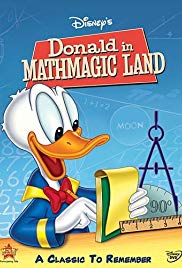
SUBJECTS — Mathematics; Music; World/Greece;
SOCIAL-EMOTIONAL LEARNING — None.
MORAL-ETHICAL EMPHASIS — None.
AGE: 8+
No MPAA Rating; Animated/Documentary; 1959; 27 minutes; Color; Available from Amazon.com.
This charming Disney Mini-Classic is an entertaining trip through some of the more interesting features of simple mathematics, particularly as it relates to geometry, architecture, biology, and music.
Selected Awards: 1959 Academy Awards Nominations: Best Documentary, Short Subjects.
Featured Actors: Clarence Nash (Donald Duck Voice).
Director: Hamilton Luske.
Galileo said, “Mathematics is the alphabet with which God has written the universe.” This film shows children the mathematical basis of music and of natural and manmade shapes and structures. It shows Donald that: “You find mathematics in the darndest places!” The film will also introduce children to Pythagoras, the ancient Greek who was the father of mathematics and music theory. “Donald in Mathmagic Land” is a favorite of math teachers in grades 6 – 8.
None.
While you are watching the movie, look for one of the examples that the film gives of mathematics in nature that is in your home or neighborhood and show it to your child. Find some examples of buildings constructed with the golden rectangles reproduced in this Learning Guide or on the Internet and show them to your child.
Pythagoras (582 – 507 B.C.E.) was the father of mathematics and music. His followers viewed him as a demigod and formed a mystical society around him called the Pythagoreans. The Pythagoreans were among the first to believe that the earth moved in an elliptical orbit around a fixed point. They taught that all nature could be expressed mathematically and made many discoveries about the relationship of shapes to numbers.
Pythagoras invented the diatonic scale, which is the scale that we see on a piano, consisting of five whole tones (t) and two half tones (s), arranged in the order: “ttsttts.” This is the scale used in most Western music.
A golden rectangle is defined as a rectangle in which, if a square is made from the shorter side and a portion of the longer side, the remaining rectangle will have the same ratio between the sides as the first. The only difference will be that the shorter side will now be the longer side. In other words, if the square in a Golden Rectangle is removed, the remaining rectangle is also a Golden Rectangle.
In a Golden Rectangle, if a = the shorter side and a + b = the longer side, then a/b = (a+b)/a. (See diagram below.) The sides of the Golden Rectangle make the Golden Ratio and arrange themselves in the Fibonacci sequence. This is a very pleasing shape that has been used in architecture and painting for hundreds of years. The shape is also found in nature.
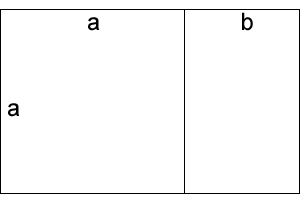
A Golden Rectangle partitioned into the square and the new Golden Rectangle created when the square formed by the shorter side and part of the longer side is removed.
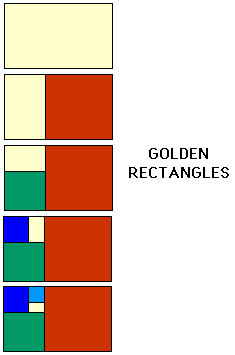
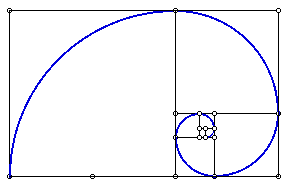
The Spira Mirabilis – which is found in nature, for example in the Chambered Nautilus
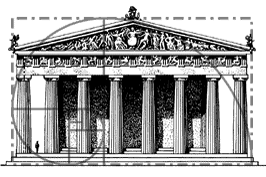
The Pantheon in Athens, Greece
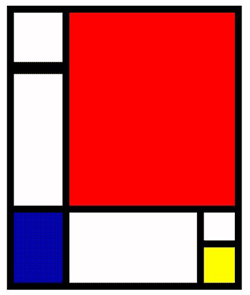
Composition in Red, Yellow and Blue, by Piet Mondrian
1. See Discussion Questions and Projects for Use With Any Documentary.
2. What is the relationship between the sides of the pentagram?
3. What is the ratio of the octaves in a musical scale?
4. Give five examples of geometric shapes we see in this room.
5. What is the relationship between music and mathematics?
Wikipedia article on Logarithmic Spirals;
Logarithmic Spirals from MIT;
Golden Rectangle from Mathworld.Wolfram.com
The Golden Mean;
The Golden Ratio/Fibonacci Sequence; at The Math Forum at Drexel.
This Learning Guide was last updated on December 9, 2009.